Italy was my first love. It entered my life 60 years ago through the beautiful, plaintive lament of Gigliola Cinquetti and the evocative musicality of her words: “Non ho l’eta per amarti” (I’m not old enough to love you) on our small black and white family TV of the time. Apparently I was not alone. Somewhere, 13-year-old Dana was also watching, also fascinated and inspired, and six years later, in 1970, she won the Eurovision Song Contest with Gigliola.
Inspired by Gigliola, I set out to learn Italian and get to know Italy. Over the decades, starting in 1966, I hitchhiked, backpacked, skied and climbed in the high Alps, and in 2012 I cycled from Naples to Brindisi on the way to Istanbul. Gradually, I traded my youthful love of Gigliola for a more lasting affection for her language and for her beautiful country, la Bel Paese.
And so I am happy to be back on a beautiful spring morning and to get to know Italy at its best, in a region and in a place that I have never visited – not even known – in all the decades since my first trip to the country in 1966. My wife and I are in Monterosso, the northernmost and largest of the five beautiful villages of the Cinque Terre on Italy’s Ligurian coast, and are making ourselves comfortable with our first real, relaxed holiday coffee.
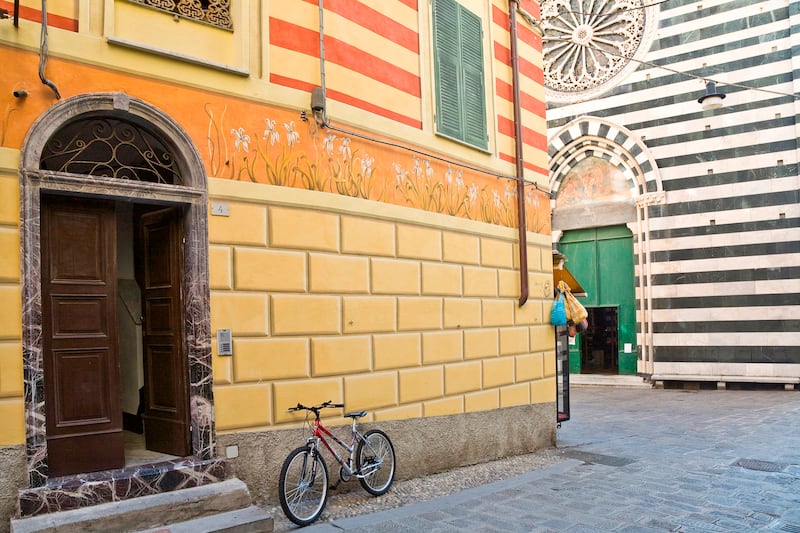
Our travel day is behind us. We flew with Ryanair from Dublin to Pisa and then took the airport shuttle and train to Monterosso al Mare, the “new” part of Monterosso. We lugged our suitcases the short distance from the train station to our accommodation along a spectacular seafront promenade and through a short pedestrian tunnel cut through the headland that separates our destination, the old town, from the “new town”.
The next morning we leave the Captain’s House, a lovely little rented boutique apartment in the old town, and carefully make our way down a winding, stepped stone alley lined with small shops and stalls, open church doors and well-stocked mini-markets. In a flash we emerge from the dark shadow of the 13th-century church of San Giovanni Battista, with its white Carrara marble and black serpentine facade, and enter the warm sunlight of the wisteria-lined and invitingly table-strewn Piazza Garibaldi.
The church bells ring nine times and boisterous, chatty groups of booted hikers of all ages and sizes stroll past us, their sticks scratching or tapping on the flagstones. We watch as walking guides pause to look for the telltale red and white markers that guide hikers through the villages and over the hills of this UNESCO World Heritage Site with its 125km of well-marked and graded trails.
An elevated train roars out of a nearby tunnel and just as suddenly into another one, without disturbing anyone. By the time we have our second cup of coffee, we are already glad that we decided to spend five days in Cinque Terre and skipped the other impressive attractions near Pisa, such as Lucca, Siena and Florence. The five villages with their hills and coasts were to be our home for five days.
Later, we set off with walking sticks and light boots to walk the short 5km to Vernazza, the oldest of the five villages and the closest on the coast south of Monterosso. The busy path is impossible to miss as it winds up from the beach area to the jutting headland that separates the two villages.
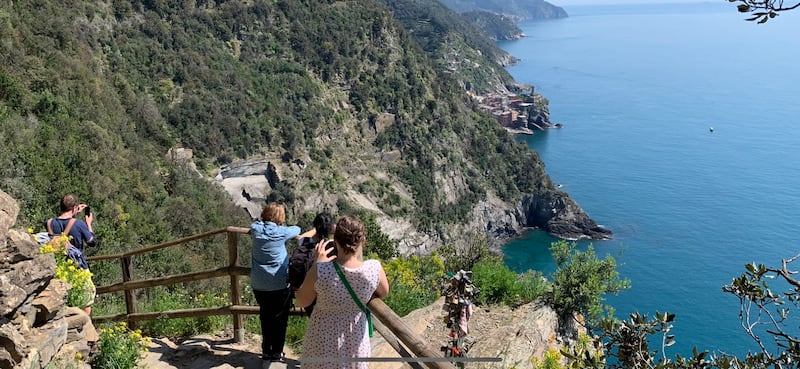
This walk is not to be underestimated. There are frequent steep steps, rough, uneven ground in places, often very narrow paths and many oncoming and following walkers requiring caution and attention. But this is a beautiful walk along flower-lined paths bordered by ancient dry stone terrace walls, with views of the azure sea below to our right. We stop to listen to the birdsong and study the natural and social history information boards along the way. Soon we begin our descent and the beautiful pastel-coloured, curving village and spectacular harbour piazza of Vernazza appear below us. We simply stop to take in and appreciate the special Italian place we have arrived at.
This is a stretch of coastline about 20 km long, bordered to the north and south by two large, jutting headlands, behind them an almost impenetrable mountain range rising to almost 800 m, and in front of them the often stormy Ligurian Sea. The wooded hills and streams knew only nature and passing boats until the first settlement around 1,000 years ago. Over the centuries, generations of brave souls have made it their home, creating a new landscape of terraced olive, wine and lemon plantations and eventually a thriving commercial economy based on fishing and agriculture.
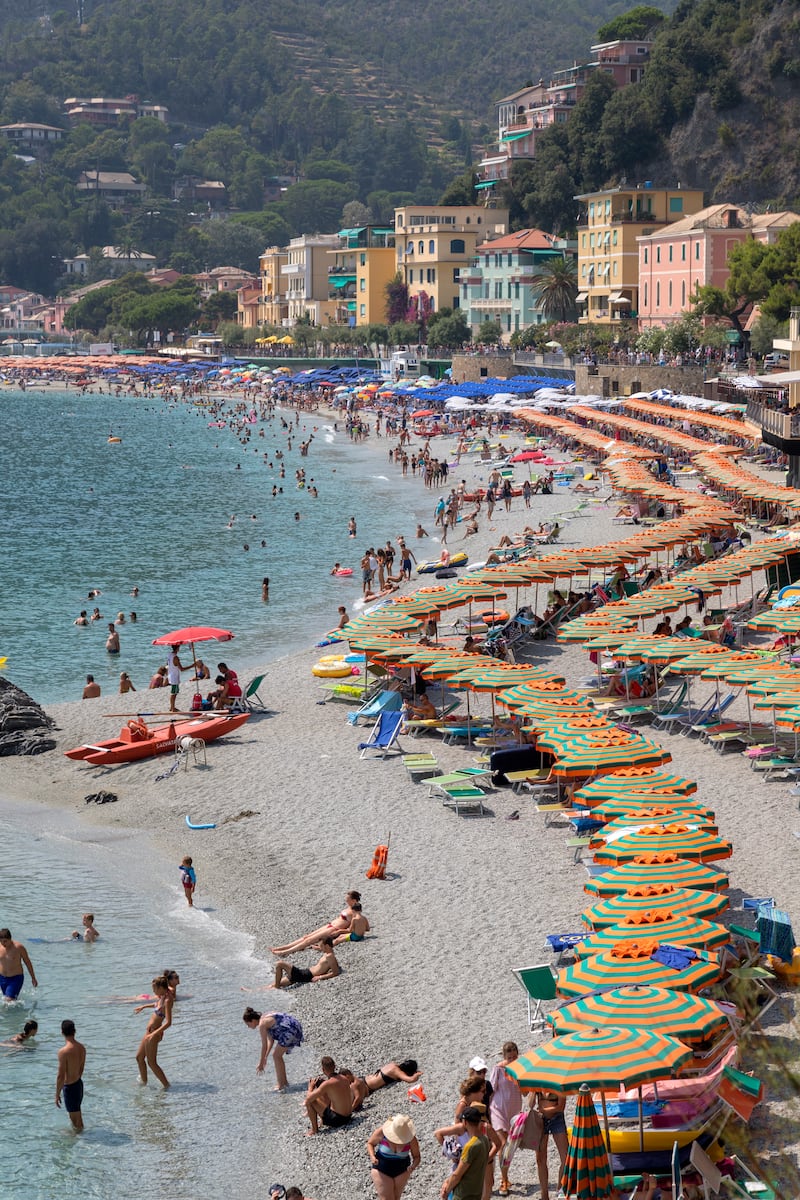
The villages, which stretch along a late 19th century coastal railway line, only became accessible by road about 50 years ago and are still all pedestrianised today. During our five days we hardly see a motor vehicle, so wandering the wide piazzas and village streets is a real pleasure and a real relief for the cheerful, bustling crowds of visitors, ourselves included. And the steep old paths between the villages, bequeathed to us by earlier farming and fishing families, are now the choice of scores of happy walkers.
The train takes us back to Monterosso al Mare in three minutes, as opposed to the nearly three-hour walk there. Much later, we watch the sunset from one of the beautiful, high stone balconies of the Aurora Restaurant, an old Genoese watchtower on the protruding headland between the old and new towns. Later still, in Monterosso al Mare, we are treated to stirring and romantic music from a mini orchestra on the beach and warm ourselves against a wall that gives us back the warmth of a long, sunny day.
On the following days we enjoy the opportunities offered by rail transport between villages. Twice we have breakfast of excellent bacon and egg in our local Piazza Garibaldi, hop on the train and enjoy morning coffee in another village on the coast, in a different setting. Two more times we take the train down the coast for dinner in Riomaggiore and Cornelia.
In Riomaggiore we eat at a restaurant above the port and small marina and join the happy crowds in celebrating a beautiful, slow, fiery sunset. All around us people watch us from restaurants, bars and the shore, and some from small boats just hanging out on the clear sea. Our favorite sunset expedition is undoubtedly the one to Cornelia. Even after a day of walking and hanging out in and above Manarola, the 380 steps from the train station up to this beautiful hilltop village fail to unsettle us. Our efforts are rewarded with the most charming little restaurant, Marina di Cornelia, and a perfect sunset.
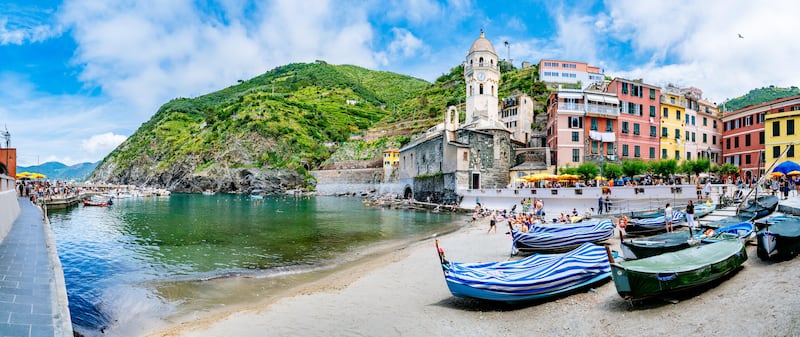
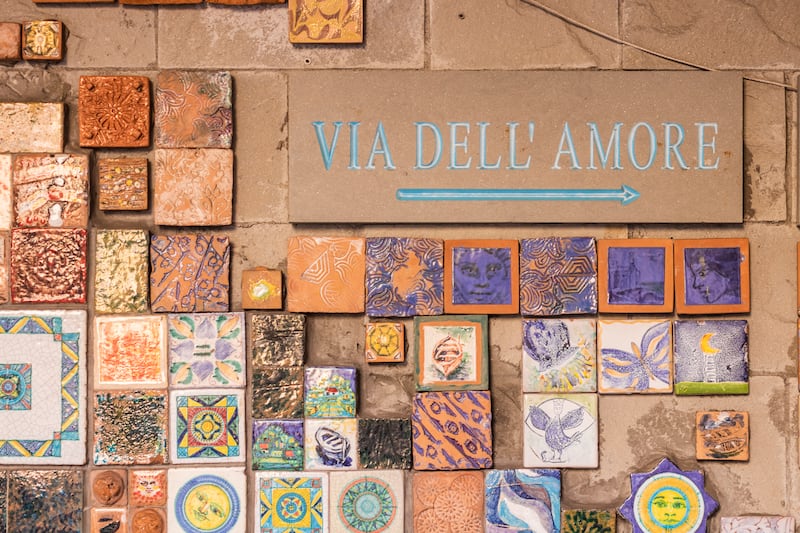

During our stay in Cinque Terre we eat ice cream, seafood, pasta, bruschetta and morning croissants. We drink Aperol, local wine and many different types of coffee. But mostly we go for walks or just hang out, in the uninterrupted warm sunshine. Sometimes we feel that the constant stairs up and down this hilly topography, although they give and shape its character, are a little tiring.
My wife gives up one day while I am walking along the path between Cornelia and Vernazza, often shaded by olive trees. I take my time and spend a good hour on the beautiful terrace at the side of the path at Bar il Gabbiano. A particularly haunting moment for me is the distant ringing of the midday bells, which seem to come from the 13th century church of San Pietro far below in Cornelia, which has now become my favorite village.
On our last day, we take the ferry from Monterosso, stopping in Vernazza and Riomaggiore for lunch, coffee, cola and cake. From the sea, the paths we have travelled out of all the villages over the past few days seem both intimidating and inviting. And on the day we set off by train to Pisa, the sea shows us its wild side. But a bright sun, a warm wind and a sea of blue and white glitter give it a new beauty, albeit with a hint of destructive power and possibly long isolation.
Our days in Cinque Terre are some of the best we have ever spent. The beauty of the place, its exclusive island feel, its easy accessibility by train and boat, the almost complete absence of cars, buses, taxis and humming Vespas, the friendliness of the Italians there, the choice of food and salons, bars, shops and restaurants, its style and opportunities for people watching and, above all, the opportunities for walking – all this makes for a unique holiday experience.
Yes, the villages are bustling and the platforms and toilets are sometimes a mess, especially in Vernazza. But there is a strange, primal charm in being part of the bustling, happy crowds on the seafronts and in the little harbors and on the terraces and in the small, narrow streets of the villages, especially when we watch the sunset together in Riomaggiore.
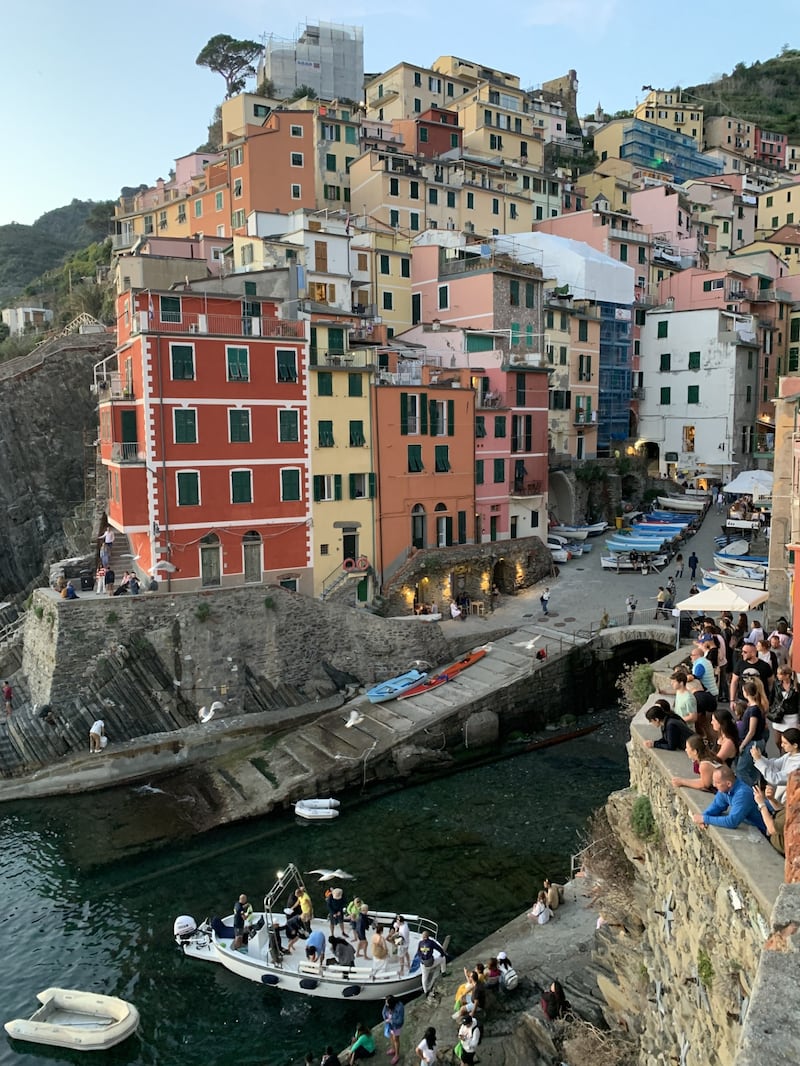
There are a wealth of activities, mostly on the sea, that we don’t take advantage of, and we don’t climb every tall Genoese lookout tower, nor see the beautiful interiors of every church and monastery with their famous works by local and foreign artists and sculptors, nor do we fully explore the hills behind the villages with their networks of paths and perched hamlets. But we did enough to fall in love with Cinque Terre in our own way and at our own pace.
Okay, I don’t find Gigliola Cinquetti, but I leave Cinque Terre with a new love for their language and the warm people and landscapes of their country, La Bella Italia.




